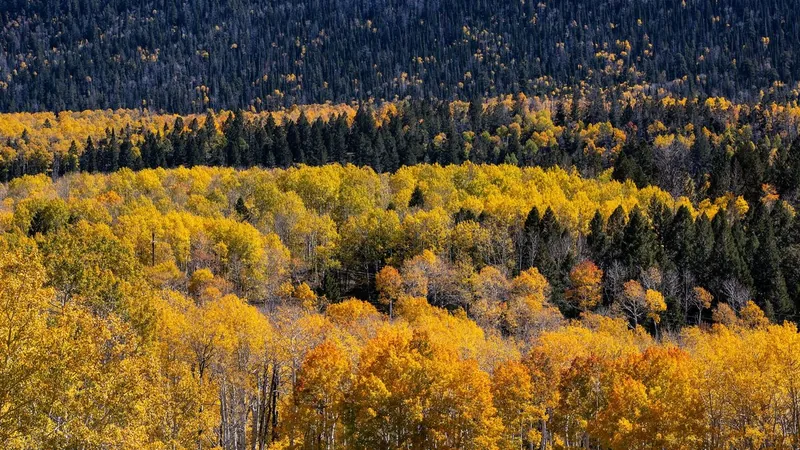
Unveiling Pando: The Ancient Giant that May Have Witnessed Humanity's First Steps!
2024-11-12
Author: Ming
Introduction
Pando, a colossal quaking aspen grove covering more than 100 acres (40 hectares) in Utah, is not just a remarkable sight; it's possibly the largest and oldest living organism on Earth, with scientists asserting its existence may date back between 16,000 and an astonishing 80,000 years. This groundbreaking study sheds light on how Pando, which reproduces clonally through root systems and offspring called ramets, could have thrived since our human ancestors first ventured out of Africa.
Pando's Age
The age of Pando has been estimated through meticulous genetic analysis, focusing on mutation rates in its genome, although the findings have yet to undergo peer review. Notably, this discovery positions Pando's age far beyond other known non-clonal organisms like Methuselah, a bristlecone pine in California which is a mere 4,856 years old. The vast range in Pando's age is mainly due to the rarity of genetic mutations, as study lead author Rozenn Pineau of Utah State University explains. Recent studies of lakebed pollen near Pando have also provided further evidence of its long-standing existence, showcasing aspen pollen in the area for over 60,000 years.
Survival and Adaptation
Such longevity raises intriguing questions about survival amid climatic shifts and environmental changes. Why has Pando thrived when many species have perished? Pineau speculates that unraveling these mysteries could profoundly enhance our understanding of resilience in plant biology.
Genetic Stability
Pando, which translates to 'I spread' in Latin, has spread to create nearly 47,000 individual stems interconnected by an extensive underground root network. This remarkable construction not only makes it the heaviest living organism on the planet but also gives it unique advantages in adapting to its environment.
Research Insights
Paul Rogers, director of the Western Aspen Alliance, considers this research a significant advancement in the study of Pando. However, he speculates that its age may align more closely with the 16,000-year mark due to glaciers that encroached upon the area about 20,000 years ago, which could have posed serious survival challenges for aspens. Confirmation that the pollen gathered indeed originated from Pando would necessitate the integration of ancient DNA analysis.
Conservation Efforts
Pineau's research also highlights the surprising stability of Pando's genetic makeup, noting that mutations are less pronounced across the grove than anticipated. This implies that while some genetic diversity exists, overall, it remains quite uniform. To better determine the mutation rate and further refine age estimates, Pineau and her team plan collaborative research efforts with Alyssa Phillips from the University of California, Berkeley.
Modern Challenges
Despite its ancient legacy, Pando faces contemporary challenges, including pressure from grazing animals like deer and cattle. Recent conservation efforts, such as fencing off vulnerable sections, along with favorable wet seasons, seem to have positively impacted Pando's growth. Paul Rogers remarked on the unexpected resurgence he has observed, drawing attention to how such measures could aid the ongoing survival of this extraordinary living organism.
Conclusion
As scientists continue to unravel the secrets of Pando, this ancient grove not only represents a unique ecological marvel but may also hold the key to understanding the resilience of life across millennia.

 Brasil (PT)
Brasil (PT)
 Canada (EN)
Canada (EN)
 Chile (ES)
Chile (ES)
 España (ES)
España (ES)
 France (FR)
France (FR)
 Hong Kong (EN)
Hong Kong (EN)
 Italia (IT)
Italia (IT)
 日本 (JA)
日本 (JA)
 Magyarország (HU)
Magyarország (HU)
 Norge (NO)
Norge (NO)
 Polska (PL)
Polska (PL)
 Schweiz (DE)
Schweiz (DE)
 Singapore (EN)
Singapore (EN)
 Sverige (SV)
Sverige (SV)
 Suomi (FI)
Suomi (FI)
 Türkiye (TR)
Türkiye (TR)